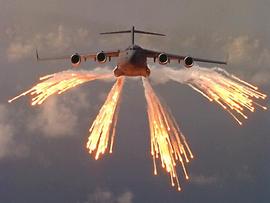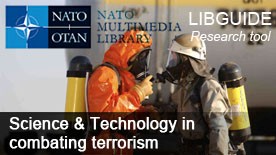The DAT POW projects are rationalized under three capability umbrellas:
- Incident management
- Force protection and survivability
- Network engagement.
1) Incident management
This umbrella covers training and development initiatives to improve organization and coordination capabilities in the event of an attack.
Protection of harbours and ports
The safe and uninterrupted functioning of ports and harbours is critical to the global economy and it is essential that maritime assets be made as secure as possible. To enhance maritime protection, varied technologies are being explored. These include sensor nets, electro-optical detectors, rapid reaction capabilities and unmanned underwater vehicles. A maritime mission planning tool, known as “Safe port”, is being developed under the leadership of Portugal. Ongoing work led by Poland aims to develop an underwater magnetic barrier to complement sonar systems currently used to detect underwater threats. Additional trials, experimentation and exercises are being organized by Latvia, Iceland and the NATO Centre for Maritime Research on protection of ports, civilian/military cooperation, protection against Improvised Explosive Devices and the development of architectures of systems.
2) Force protection/ survivability
This umbrella covers training and development initiatives “to minimize the vulnerability of personnel, facilities, equipment and operations to any threat and in all situations.”
Reducing the vulnerability of wide-body civilian and military aircraft to man-portable air defence systems (MANPADs)
A range of infrared countermeasures is under development. These have successfully been applied to large aircraft and helicopter platforms and have led to an increase in the number of platforms supporting operations and their level of protection. The UK is the lead nation for this initiative and the NATO Air Force Armaments Group (NAFAG) has provided critical expertise and support to the annual field trials.
Reducing the vulnerability of helicopters to rocket propelled grenades (RPGs)
The threat posed by RPGs against Alliance helicopters deployed in operations is significant. Current work builds on an earlier initiative led by Bulgaria on the development of helicopter armour. France, as contributing nation, through the Délégation Générale pour l'Armement and industrial partners, has conducted tests on innovative technologies to protect heavy helicopters at distances where avoidance of RPGs is no longer possible.
Detecting, protecting against and defeating chemical, biological, radiological and nuclear (CBRN) weapons.
The ideal would be to prevent terrorists from using CBRN weapons but there is a requirement to protect forces and populations against their effects should prevention fail. France, as the first lead nation in this effort, had developed a work plan which included live exercices, CBRN agent sampling and identification analysis. A broad range of technologies were tested against a number of CBRN-related threats.
Since 2012 the Czech Republic has been developing a prototype for chemical detection and in June 2012 Canada organized Exercise PRECISE RESPONSE, exploring a scenario with a live agent, for training purposes.
Countering improvised explosive devices (C-IED)
This effort is led by Spain through the NATO C-IED Centre of excellence in Madrid but draws on expertise from several member countries’ industries and the NATO industrial advisory group (NIAG). Various technologies to defeat the device have been explored, in particular stand-off detection. In 2012 DAT POW with the NATO communication and information agency (NCIA) organized a route clearance demonstration in Germany to improve doctrine, share best practice andstandardize NATO route clearance operations. Additional CIED related projects led by NCIA involve automated data mining and scanning systems for passengers.
Explosive ordnance disposal (EOD) and consequence management
Here the objective is to improve NATO’s capabilities, the training of EOD teams and management of the consequences of an explosion. DAT POW supports the annual Northern challenge exercise, led by Iceland, which involves underwater EOD/ IED disposal/conventional munitions disposal (CMD) and is open to NATO and Partnership for Peace Nations,. In 2012, DAT POW supported NATO EOD demonstrations and trials, led by the NATO EOD Centre of Excellence in Trencin, Slovakia. The strong community of interest includes experts from partner nations, such as the Irish defence forces ordnance school.
Developing Non-lethal capabilities
The NATO operational community has stressed the need for better response capabilities which minimize collateral damage. If forces can only respond in a lethal manner civilians and military alike are endangered and mission failure and political fallout may result. Building on previous work led by Canada to identify non-lethal capabilities for NATO forces, Belgium and France are co-leading a project on standards for non lethal weapons. The Centre for Maritime Research and Experimentation in La Spezia, Italy, is exploring the behavioural effects of non lethal weapons.
Protection of critical infrastructure
This is becoming an overarching project since it involves protection of NATO’s infrastructure, personnel and citizens. It is closely linked to other initiatives such as harbour protection, intelligence, reconnaissance, surveillance and target acquisition and defence against mortar attacks. In October 2009 the BELCOAST 09 exercise incorporated many DAT initiatives in a multi-dimensional threat environment. This initiative is now integrated into the harbor protection program led by Portugal.
Technologies to defend against mortar attacks
As a result of the increasing number of terrorist mortar attacks in Afghanistan and Iraq, this work was initiated in 2006 by the Netherlands and taken up by Norway in 2007. The aim was to employ new technologies to detect mortar-firing positions and then to react with sufficient speed and accuracy against the attacker or destroy the projectiles. This initiative was closed upon completion in 2010 and the resulting architecture of systems is in use in Afghanistan.
3) Network Engagement
This capability umbrella covers training and development to improve identification and targeting of key nodes of threat networks.
Technologies and concept development for intelligence, surveillance, reconnaissance (ISR) and target acquisition
The goal is to develop improved tools for early warning and identification of terrorists and their activities. To build on the improved intelligence/information sharing achieved over the last decade in common operations and to capture these developments for the future, DAT POW supported Trial Unified Vision 2012, organized by the joint capability group ISR.Simulating a real–world operational environment, the trial sought to determine how well participants could analyze threat information and identify and track threats to form a cohesive intelligence picture and how easily this could be shared. DAT POW also supports the NATO HUMINT centre of excellence in Oradea, Romania, which is seeking to improve technical interoperability within the NATO HUMINT community and to analyse human aspects of the operational environment where NATO forces operate.
Biometrics
Biometrics data are essential for the protection of forces in theatre, allowing them to identify known or suspected insurgents. The Strategic Commands have recognized that developing and improving this area is a military requirement and a NATO biometrics Concept is being developed. The concept establishes a structure that allows NATO nations to choose their level of participation in biometrics operations, while maintaining control of biometric data produced by their forces. The DAT POW community is involved in and supportive of this effort and its multiple strands of work (doctrine, concept, standardization and capabilities).
Special Operations Forces Community
Recognized as one of the lead entities in the fight against terrorism, special operations forces (SOF) are a crucial component of the DAT POW. DAT POW supported the NATO special operations headquarters (NSHQ)in developing a mobile laboratory permitting forensics investigation of IED incidents in theatre. DAT POW is now supporting the development of a database for NATO special operation counter terrorism activities.




